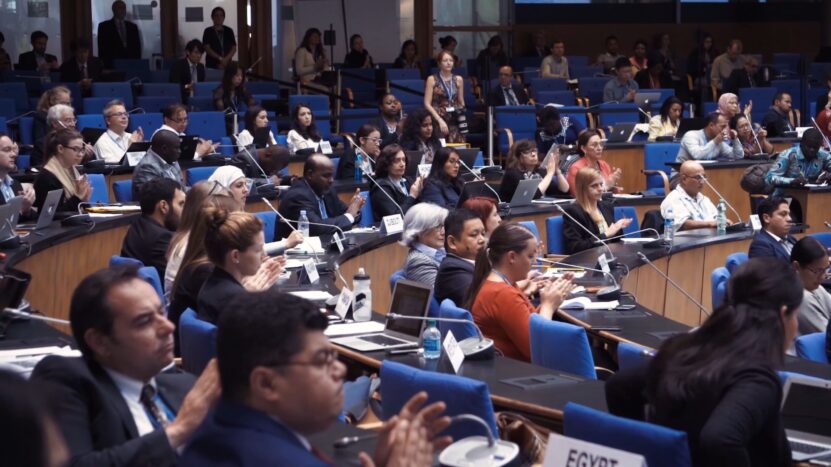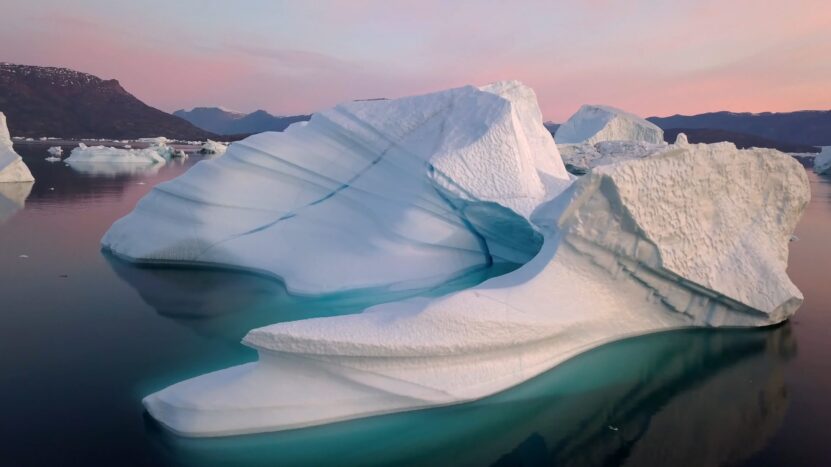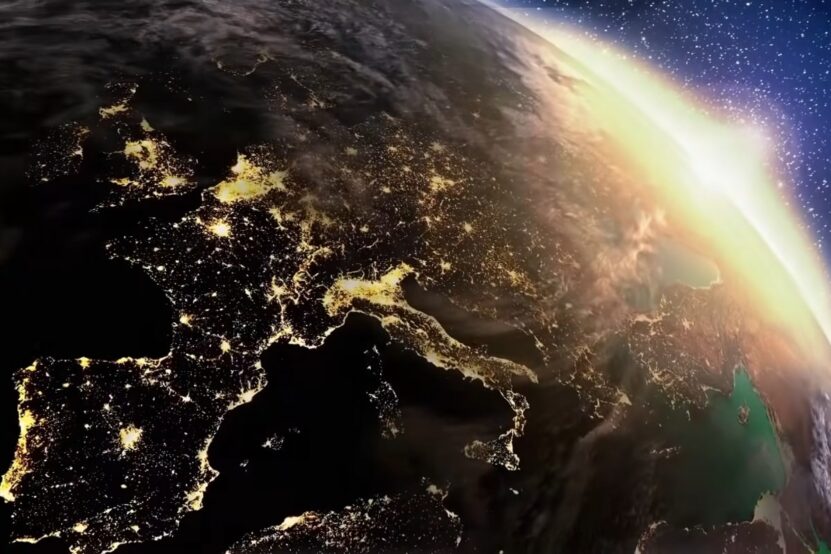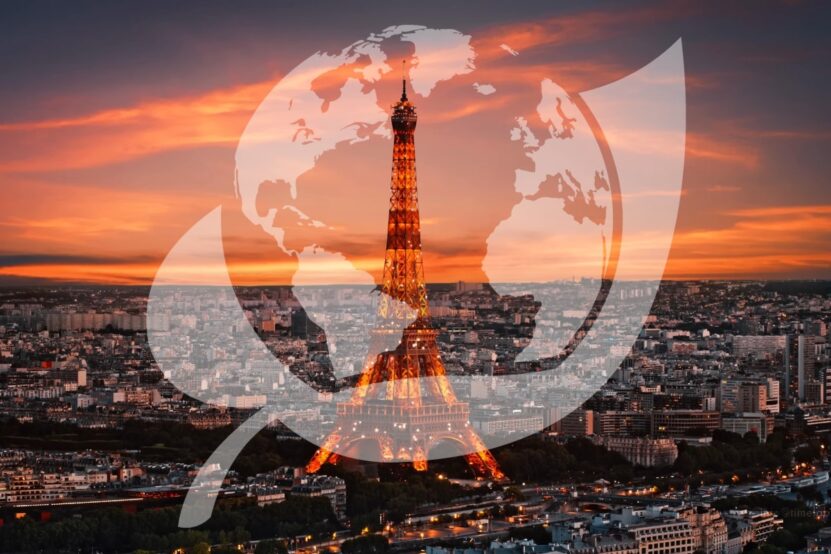Undoubtedly at some point you’ve wondered about the global efforts to combat climate change, and doing so you’ve likely come across the term “Paris Agreement”. It’s a big deal, and I’m here to break it down for you.
In essence, it is the world’s promise to address the pressing issue of climate change. It’s like a pact made by countries to work together and do their part in saving our planet.
Climate Change

Let’s start with the basics. Imagine our Earth wearing a blanket, made up of gases, that keeps it warm. This is called the greenhouse effect.
Now, human activities, like burning fossil fuels, are adding extra layers to this blanket, making the Earth too warm. This is what we call global warming.
And the consequences? Well, they’re vast and varied, impacting our environment, societies, and economies. Think of melting ice caps, extreme weather events, and loss of biodiversity. Scary, right?
Genesis of the Paris Agreement
To understand the Paris Agreement, we need to go back a bit. The United Nations Framework Convention on Climate Change (UNFCCC) was established in 1992 as a platform for countries to discuss climate change.
Over the years, various agreements were made, but they had their limitations. For instance, the Kyoto Protocol in 1997 set targets for only a few countries. Fast forward to 2015, and the world felt the need for a more inclusive and effective agreement.
Enter the Paris Agreement. It was adopted by 196 parties at the 2015 United Nations Climate Change Conference near Paris, France. As of February 2023, 195 members of the UNFCCC are parties to the agreement.
Fun Fact: The Paris Agreement was opened for signature on Earth Day, 22 April 2016. Talk about perfect timing!
Key Elements

Alright, let’s dive deeper into the heart of the Paris Agreement. What makes it tick? What are its core components? Let’s explore.
Nationally Determined Contributions (NDCs)
- What are they? In their NDCs, countries lay out the actions they’ll take to reduce their greenhouse gas emissions. It’s like a country’s personal pledge to the world on how they’ll combat climate change.
- Adaptation: Apart from mitigation efforts, NDCs also detail how countries plan to adapt to the impacts of climate change, building resilience.
- The Bigger Picture: These NDCs are crucial because they give us a roadmap of how each country plans to reach the goals of the Paris Agreement.
Long-Term Goals
- The 2°C Target: The Paris Agreement’s overarching aim is to keep the global average temperature rise to well below 2°C above pre-industrial levels. But there’s more…
- The 1.5°C Ambition: Efforts are being made to limit the temperature increase even further, to 1.5°C above pre-industrial levels. Why? Because crossing the 1.5°C threshold could trigger more severe climate impacts, like intense droughts and heatwaves.
Adaptation and Mitigation
- Adaptation: This is all about preparing for and dealing with the effects of climate change. Think of it as building a house that can withstand a storm.
- Mitigation: On the other hand, mitigation is about reducing the causes of climate change. It’s like stopping the storm from happening in the first place.
Pro Tip: The Paris Agreement is dynamic. It works on a five-year cycle of increasingly ambitious climate action. This means every five years, countries revisit their NDCs and ramp up their efforts.
Process of Negotiations

The journey to the Paris Agreement wasn’t a walk in the park. It involved intense negotiations, debates, and collaborations.
- The Build-Up: The Paris Agreement was adopted by 196 Parties at the UN Climate Change Conference (COP21) in Paris in 2015. But the discussions started way before that.
- Stakeholders: Various countries, stakeholders, and organizations played pivotal roles in shaping the agreement. It was a collective effort, with each party bringing its perspective and concerns to the table.
Fun Fact: The Paris Agreement entered into force in less than a year after its adoption, showing the world’s urgency and commitment.
In Action
Since its adoption, the Paris Agreement has been more than just words on paper.
- Progress: Countries have been actively submitting their NDCs, detailing their climate action plans. The goal? To be more ambitious with each update.
- Real-World Impact: Many countries, regions, and even companies are setting carbon neutrality targets. Zero-carbon solutions are becoming competitive, especially in sectors like power and transport. This not only helps the environment but also opens up new business opportunities.
Fun Fact: By 2030, zero-carbon solutions could be competitive in sectors representing over 70% of global emissions. The future looks green!
Challenges and Criticisms

Navigating the path of the Paris Agreement hasn’t been all sunshine and rainbows. Like any global initiative, it has faced its fair share of challenges and criticisms.
Political Hurdles
The global political landscape is ever-changing. Some countries have shown hesitancy or even withdrawal from the agreement due to domestic political shifts.
Economic Impediments
Transitioning to a low-carbon economy requires significant investments. For some nations, especially those heavily reliant on fossil fuels, this transition poses economic challenges.
Adequacy of Goals
While the Paris Agreement’s goals are commendable, critics argue that they might not be enough. The current NDCs, when combined, might still lead to a temperature rise beyond the desired 1.5°C or 2°C.
Enforcement Mechanisms
The Paris Agreement largely relies on countries’ goodwill for compliance. Some critics believe that without strict enforcement mechanisms, achieving the agreement’s goals might be challenging.
Fun Fact: The Paris Agreement, despite its challenges, remains one of the most widely ratified international treaties. That’s global unity for you!
Global Impact and Future Prospects

The Paris Agreement, even with its challenges, has the potential to reshape our world.
Benefits of Implementation
Successfully implementing the Paris Agreement can lead to a healthier planet, fewer extreme weather events, and more stable ecosystems. It can also spur economic growth through green technologies and sustainable practices.
International Cooperation
The Paris Agreement underscores the importance of global unity. Climate change knows no borders, and international cooperation is the key to addressing this shared challenge.
The Road Ahead
While significant strides have been made, the journey is far from over. The coming years will be crucial in determining whether the world can come together to turn the Paris Agreement’s goals into reality.
Fun Fact: The Paris Agreement has sparked a global movement, with many non-state actors like cities, businesses, and individuals stepping up their climate actions.
FAQ
What is the Paris Agreement?
It’s a legally binding international treaty aiming to combat climate change by limiting global temperature rise.
How does the Paris Agreement differ from previous climate agreements?
Unlike its predecessors, the Paris Agreement brings all nations together with flexible and self-determined goals.
What are NDCs, and how do countries set them?
NDCs are pledges by countries detailing their climate actions. They are set based on each country’s capabilities and circumstances.
What are the long-term goals of the Paris Agreement?
To limit global temperature rise to well below 2°C, with efforts to keep it to 1.5°C above pre-industrial levels.
How is the Paris Agreement enforced?
It operates on a system of transparency and peer pressure, rather than strict enforcement mechanisms.
Conclusion
The Paris Agreement is more than just a document. It’s a beacon of hope, a testament to what humanity can achieve when we come together for a common cause. While challenges lie ahead, the collective will of nations, communities, and individuals can turn the tide against climate change. Let’s all do our part, for our planet and future generations.

